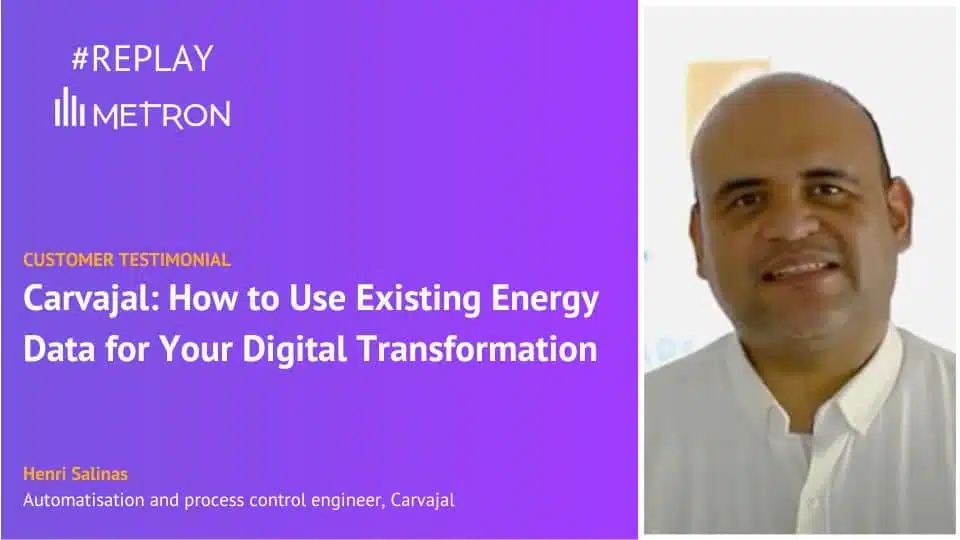CARVAJAL Pulp and Paper is the largest white paper and writing paper producer in Colombia. The company has two plants: one in the department of El Valle and the other in the department of Cauca.
Optimizing and reducing Carvajal's energy consumption is therefore a major challenge for the company.
Henry Salinas, automation and process control engineer, tells us how Carvajal reduced their energy consumption with the METRON solution.
In total, there are 6 boilers, 4 paper machines, 1 glazing machine and 2 pulp mills.
Their differentiating factor is that the paper is made directly from sugar cane bagasse. They also have three turbine generators of 17 megawatts, 15 megawatts and one of 18.5 megawatts.
So you could say that their energy requirements are quite high. Their main sources of energy are coal-fired boilers. They have two recovery boilers that use one of the pulp mill byproducts in the conversion of bagasse to pulp.
How did the digital solution help you manage your energy consumption?
We already had an integrated information system, but we didn't have the means to extract that data. We didn't have models to help us manage or detect opportunities to improve, mainly our consumption. As mentioned, we produce our own energy with coal. It is therefore very important to be efficient so that the manufacturing cost can be competitive.
What is your experience regarding the implementation and integration of the platform? What value did the support from METRON experts bring to you?
We had the advantage of having integrated information system, a few years earlier, all the data related to our control systems in a centralized system with historical data. So when METRON came along, we thought that the most important thing in digital transformation, and in this kind of solution, is to have the information available. So this helped us a lot in the process.
« Of course, the support from METRON experts helped us detect opportunities and develop models in order to obtain results from the extracted information. »
Henry Salinas, automation and control process engineer, Carvajal
Could you give examples of initiatives that were brought to term, and the tangible and non tangible results?
From the energy point of view, I have two very important initiatives. The first is import-export. As I said earlier, we sometimes produce our own energy. The solution helped us detect when to buy energy or when it is cheaper to produce our own. Measuring the online efficiency of Boiler 7 was also one of the initiatives that led us to optimize our coal consumption. Coal is one of our most expensive raw materials, so we were able to improve our manufacturing costs.
Other initiatives taken have been on chemical consumption, especially in the bleaching process of the paper machine and in the pulp.
One of the non-tangible, less quantifiable results is that we have developed tools to assess process variability and taken steps to maintain process stability, initially in the machines.
From your experience with METRON, what were the keys to success? Would you have any advice for other industries that want to implement an energy management system?
One of the main keys to success was that we had data. If you're going to implement a system like this, you need to have information. It's important to know what to work on. That's your raw material.
And the other important thing is change management: the team has to be receptive to the METRON solution, the employees have to see that it's a tool that they're going to have and that's going to help them do their job.
Want to learn more about Energy Management & Optimization System (EMOS)?











